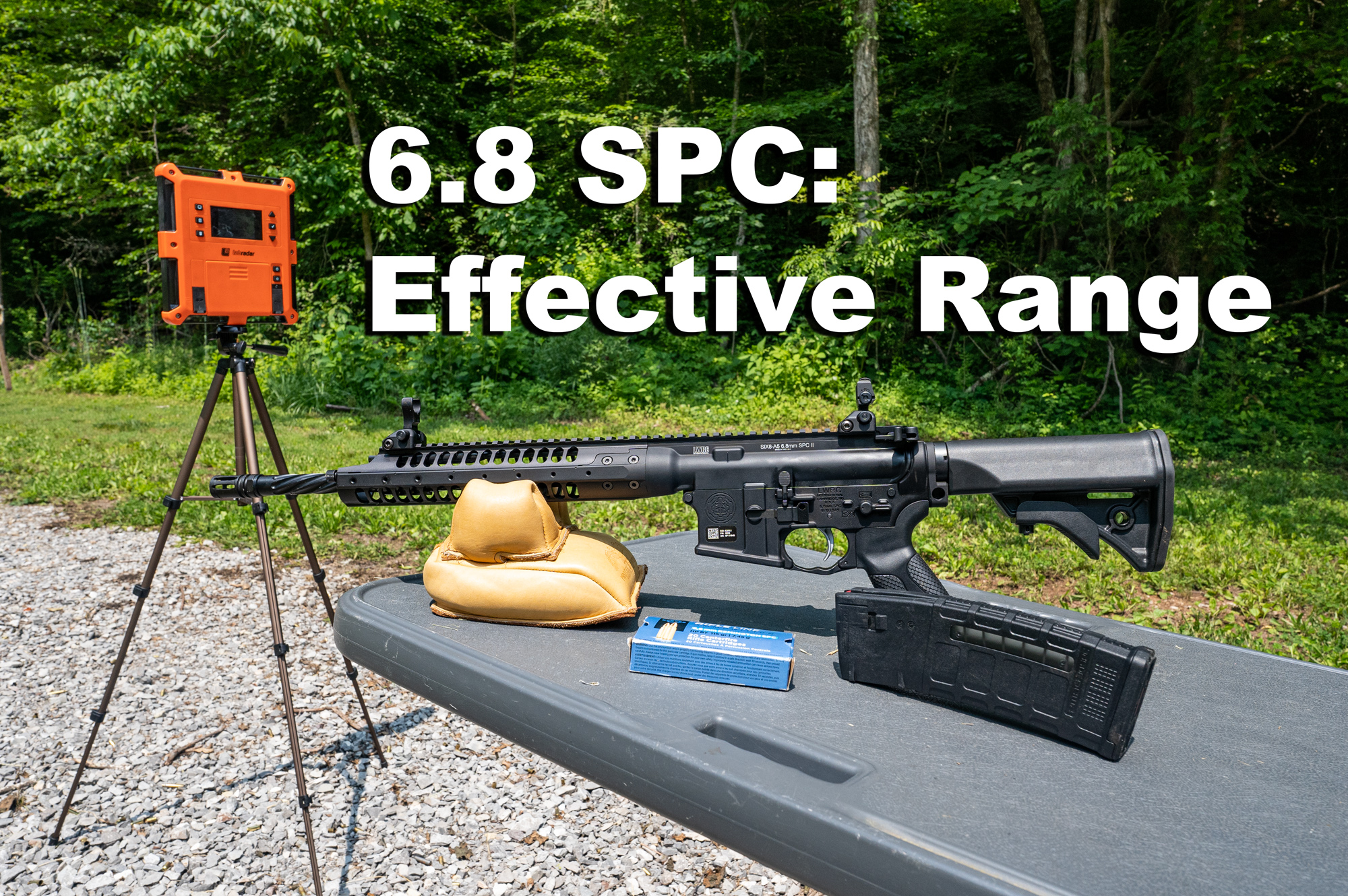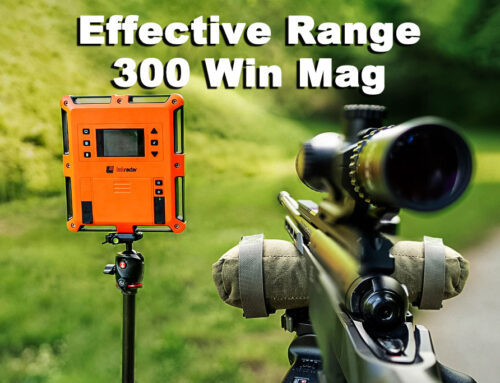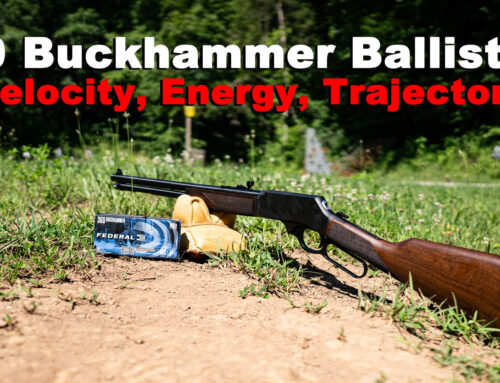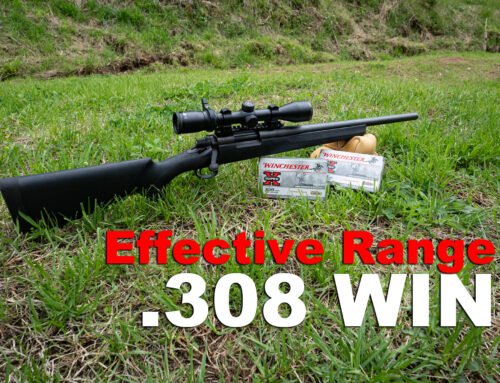The firearms, ammunition, and shooting industry is full of debates. How many cartridges are needed in a conceal-carry round? What’s the best type of bullet for hunting? Is a 20-gauge good for home protection? That’s just a sample of the endless debates that will, in all likelihood, never be settled.
Another common debate orbits around “effective range.” What is the effective range or maximum distance for the .223 Remington, 9mm Luger, or .30-06 Springfield? Maximum distance is an issue that brings debate, squabbles, and a fair amount of bickering.
What is the Effective Range of 6.8 SPC?
For most shooters with a reasonable amount of experience and practice, 300 yards is probably the effective hunting range for the 6.8 Remington SPC. At this distance, typical shooters in the field with a properly-sighted rifle, a strong shooting position, and perhaps some assistance from a bipod or monopod, should be able to harvest a whitetail deer, mule deer, or coyote.
Each cartridge, of course, is different. The 6.8 Remington SPC, for example, is a relatively new addition to the shooting industry. If you’ve adopted the round, or you’re considering a rifle chambered for this cartridge, you need to know the effective range, especially when using the round for hunting.
Determining the maximum range seems simple, but it’s surprisingly complex. To simplify the process, we’ll first define “effective range.” Once we know what to look for, we can examine the statistics from a few popular 6.8 SPC products to see just how far these cartridges can reach.
Different Sports, Different Definitions for “Effective Range”

“Effective” is a moving target. The effective range of the 6.8 SPC or any other cartridge depends largely on the activity. A shooter at the range, who simply needs to place a bullet on the desired target, has a different definition than a hunter, who needs to place a bullet in the right place with enough speed and energy to quickly and humanely harvest the animal.
There are, essentially, three overall factors to consider: velocity, energy, and trajectory. In a perfect world, a bullet would travel with ample speed and power, and it would do so without dropping a millimeter.
Shooters can compensate for drops in trajectory, making adjustments that allow for accurate shooting. They cannot, however, compensate for a cartridge’s reduced velocity and energy. If it’s too slow and underpowered, there is nothing we can do. (Outside of loading our own ammo, but even then there are limits.)
Energy is one of the most common factors for determining an effective range for hunting. But it’s flawed, as bullets need good penetration, which largely relies on speed and bullet design. That said, energy provides a reasonable indicator of a bullet’s effective range. It doesn’t tell the entire story, but it helps.
Velocity also matters, as it drives penetration and bullet expansion. The more velocity, generally speaking, the more effective a bullet will be.
Downrange Ballistics for the 6.8 Remington SPC
Velocity
| 200 Yard Velocity | 300 Yard Velocity | 400 Yard Velocity | 500 Yard Velocity | |
|---|---|---|---|---|
| 115-grain Deer Season XP (Winchester) | 2,087 | 1,845 | 1,622 | 1,424 |
| 120-grain Custom SST (Hornady) | 2,050 | 1,862 | 1,685 | 1,522 |
| 110-grain PTS (Sellier & Bellot) | 2,083 | 1,869 | 1,666 | N/A |
| 90-grain Varmint & Predator (Federal) | 2,335 | 2,042 | 1,772 | 1,530 |
At 200 yards, the 6.8 SPC is right above 2,000 feet-per-second (fps). This is certainly enough speed to drive an expanding bullet deep into a deer or coyote. Even at 300 yards, the bullet’s speed is effective, but at 400 it starts to drop to around 1,700 fps. At 500 yards, speed starts to drop below 1,550 fps. At this range, the lack of speed could be a concern for hunters.
Energy
| 200 Yard Energy | 300 Yard Energy | 400 Yard Energy | 500 Yard Energy | |
|---|---|---|---|---|
| 115-grain Deer Season XP (Winchester) | 1,112 | 869 | 672 | 518 |
| 120-grain Custom SST (Hornady) | 1,120 | 923 | 756 | 617 |
| 110-grain PTS (Sellier & Bellot) | 1,059 | 853 | 678 | N/A |
| 90-grain Varmint & Predator (Federal) | 1,090 | 834 | 628 | 468 |
We need to state it again because it’s so important: don’t get caught up on energy alone. It’s not the defining factor for effective range, but merely a reasonable indicator.
At 200 yards, we again see that the 6.8 SPC maintains strong numbers. Assuming effective terminal performance, the energies of 1,050 to 1,150 should be enough to drive a bullet reliably into a whitetail or mule deer, and could even be effective for larger animals like elk. (200 yards is probably the effective range for elk.)
6.8 SPC Downrange Trajectory/Drop
| 300 Yards | 400 Yards | 500 Yards | |
|---|---|---|---|
| 115-grain Deer Season XP (Winchester) | 10.4 | 31.2 | 65.2 |
| 120-grain Custom SST (Hornady) | 10.5 | 31.1 | 64 |
| 90-grain Varmint & Predator (Federal) | 8.2 | 24.7 | 52.6 |
Our data below is slightly different for the Sellier & Bellot. This load is zeroed at 100 yards.
| 200 Yards | 300 Yards | 400 Yards | |
|---|---|---|---|
| 110-grain PTS (Sellier & Bellot) | 4.5 | 17.1 | 39.7 |
Trajectory, which is affected by speed, is all about bullet placement. It doesn’t tell us how a bullet will perform when it hits the target, but does tell us the amount of drop for which a shooter needs to compensate.
At 300 and even 400 yards, a well-practiced shooter can likely compensate for the drop, assuming the rifle is sighted to that distance. Take Sellier & Bellot ammo products as an example; with a rifle zeroed at 100 yards, a good shooter can place the bullet in the vitals of a deer at 200 yards, as the drop is only 4.5 inches. But at 400 yards, the drop is over three feet.
Frankly, with a reliable 6.8 SPC hunting cartridge, it’s not the velocity nor the energy that will limit most shooters’ ranges. It’s the trajectory.
So…What’s the takeaway?
After the numbers are crunched and stats are compiled, what can we say about the “effective range” of the 6.8 Remington SPC?
First, we can state a universal fact about long-distance hunting and target shooting: the effective range of the user is, in almost all cases, shorter than the effective range of the cartridge itself. In other words, outside of elite, military-trained shooters, it’s the shooter’s skill that will limit the effective range, not the rifle, ammunition, bullet design, propellant type, or all the other potential variables.
So, we’ll stick what we guided you with originally – consider the 6.8 SPC’s effective range about 300 yards. We’re going to assume you have some experience with a rifle and have the equipment you’d expect a responsible outdoorsman to carry. If you push the 6.8 SPC any farther, odds increase that you’ll ethically kill medium sized game.





Leave A Comment